TRANSPORTATION ROOM
Welcome to the Railroad Car Ferry shelf in the Railroad Display
Case.
Page 1
This page by Jerry Wilkinson
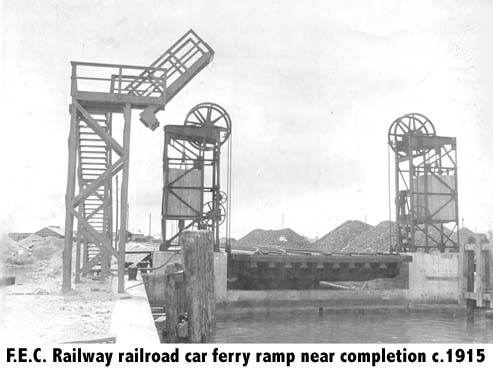
Henry Flagler's goal was Havana, Cuba and he died
in 1913 without seeing it completed. It is difficult to realize the size
of the above "gang plank" from the photo. The loading ramp connecting the
fixed tracks to the ship had to be adjusted for tidal changes.
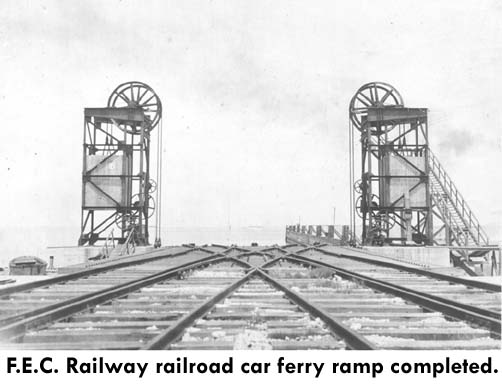 The three railroad ferry ships could up to 30
full sized railroad cars each. The inside car deck was 360 feet long with
four parallel tracks running the length. In addition to the 30 cars, the
ferry had the capacity for 3000 tons of dry cargo and 3000 tons of bulk
molasses in ballast tanks.
The three railroad ferry ships could up to 30
full sized railroad cars each. The inside car deck was 360 feet long with
four parallel tracks running the length. In addition to the 30 cars, the
ferry had the capacity for 3000 tons of dry cargo and 3000 tons of bulk
molasses in ballast tanks.
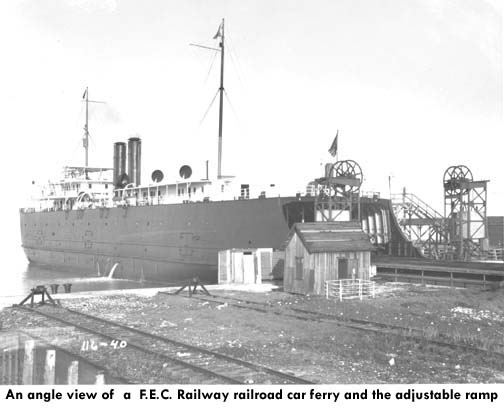 It was powered by two triple expansion steam engines
of 1500 indicated horse-power at 100 RPM. The 90 mile voyage normally took
8 hours at an average speed of 12 and half MPH.
It was powered by two triple expansion steam engines
of 1500 indicated horse-power at 100 RPM. The 90 mile voyage normally took
8 hours at an average speed of 12 and half MPH.
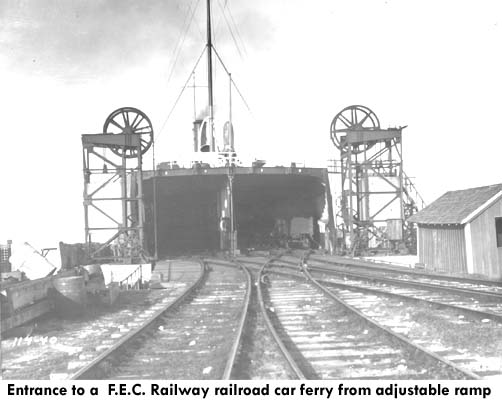 Some perspective of it size can be seen in the
above photo. A freight car can be seen on the right track at the ferry's
entrance. The track's switching matrix is also viewable.
Some perspective of it size can be seen in the
above photo. A freight car can be seen on the right track at the ferry's
entrance. The track's switching matrix is also viewable.
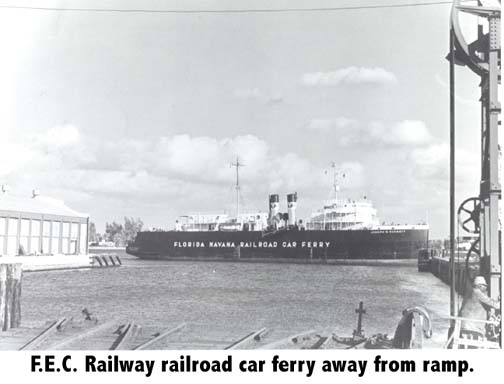 Note the ramp operator at the lower right. After
the 1935 Hurricane, the ships were moved to a Fort Lauderdale to Havana
run. During WW I they were used as mine layers, then auto ferries until
1969. The above ferry is the Joseph R. Parrott, the VP of the Flagler System.
Last Page of Railroad.
Note the ramp operator at the lower right. After
the 1935 Hurricane, the ships were moved to a Fort Lauderdale to Havana
run. During WW I they were used as mine layers, then auto ferries until
1969. The above ferry is the Joseph R. Parrott, the VP of the Flagler System.
Last Page of Railroad.
Return to Railroad Display Case, or
Return to Transportation Room
|







